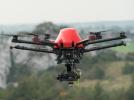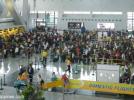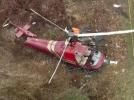Korean B773 over Pacific on Jul 2nd 2013, engine shut down in flight
A Korean Air Boeing 777-300, registration HL8275 performing flight KE-38 (dep Jul 1st) from Chicago,IL (USA) to Seoul (South Korea) with 273 people on board, was enroute at FL340 about 300nm south of Anadyr (Russia) when the crew needed to shut the left hand engine (GE90) down. The crew drifted the aircraft down to FL270, turned north and diverted to Anadyr dumping fuel. The aircraft landed safely on runway 19 about one hour later.
A replacement Boeing 747-400 registration HL7491 was dispatched from Seoul to Anadyr as flight KE-3037 and landed in Anadyr about 10 hours after landing of HL8275. The Boeing 747-400 boarded the passengers and reached Seoul with a delay of 15 hours.
Rosaviatsia reported the left hand engine had failed, there were traces of oil on the engine cowl. The replacement Boeing 747-400 carried a repair team and spare parts from Seoul to Anadyr and took the passengers to Seoul on its return.
The incident aircraft was able to position to Seoul on Jul 6th.
On May 6th 2014 the NTSB released a preliminary report stating the aircraft was crossing the Bering Sea when the left hand engine was shut down in flight prompting the crew to divert to Anadyr for a safe single engine landing. A post landing inspection revealed the transfer gear box (TGB) housing was fractured and the internal gears were damaged. The engine was removed and sent for examination, the TGB was examined revealing a separated radial bevel gearshaft. Metallurgic examination of the gearshaft revealed fatigue cracks resulting from torsional/biaxial stress. Analysis concluded that the stress was the result of de-carbonization of the gearshaft area, which was not to be hardened by design during the manufacturing process and had received a copper plate to prevent hardening and de-carbonization during the hardening process, due to an insufficient copper plate identifying a manufacturing process deficiency.
As result of of the discovery deficiency four service bulletins were issued by the engine manufacturer, the FAA issued two emergency airworthiness directives plus an additional airworthiness directive. According to the engine manufacturer all suspect gear shafts have since been removed from service.
http://avherald.com/h?article=464b75c6














Komentarze